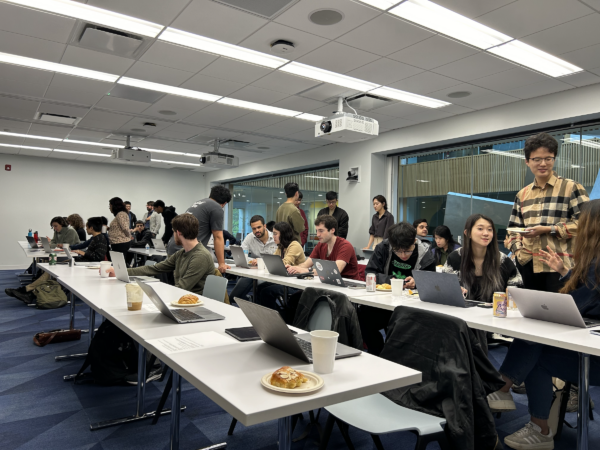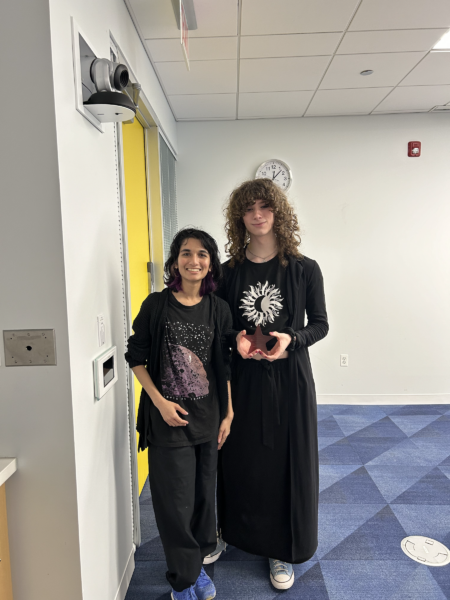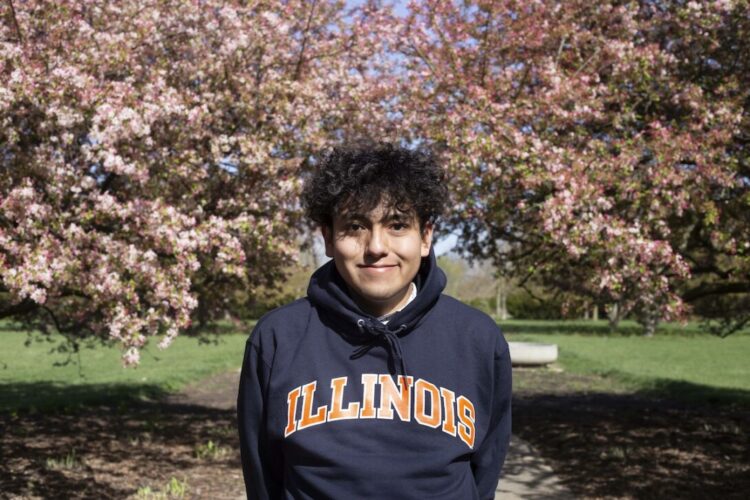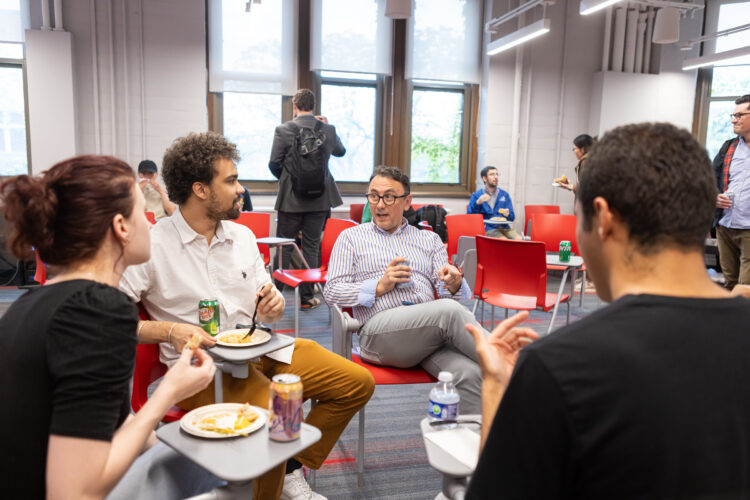Eric and Wendy Schmidt AI in Science Postdoctoral Fellows host first-ever hackathon
This spring, two fellows from the Eric and Wendy Schmidt AI in Science Postdoctoral program led the charge in organizing and running a Hackathon to tackle pressing research questions using AI and machine learning. A hackathon is a portmanteau of the words ‘hacker’ and ‘marathon,’ where participants come together to work on a programming challenge as a team, hoping to solve the problem within a short span of time. In this case, fellows Colm Talbot and Ludwig Schneider had two particular challenges in mind.

For the first-ever fellow-led hackathon, fifty-five individuals signed up to participate. Participants were split into two projects. The first project focused on molecular modeling using Graph Neural Networks (GNNs) to predict interactions within molecules. The second project was on using classification, regression, and generative modeling to understand the lives and deaths of massive stars. Once participants were split among the two projects, they were placed in teams of four, competing to solve their respective challenges before the end of the week.
Learn more about each of the projects, and winning teams, below:
Unlocking the Secrets of Molecules with AI

Diving into the world of molecular modeling, where atoms and bonds form the essence of everything around us, participants were challenged to decipher these microscopic puzzles using the power of Graph Neural Networks (GNNs). Teams applied GNNs to model molecules as complex graphs, drawing insights from the vast ChEMBL database. More than just creating simulations; the challenge was about pioneering a future where we understand the very fabric of molecular behavior.
Ludwig Schneider led this challenge, stating, “it was exciting to see the different ideas and approaches to the challenges from the teams.” Twenty-four participants took part in the molecular challenge, with the winning team consisting of members Juhae Park, César A. Castro Rubio, Josh Rauvola, and Setu Loomba.
Predicting the Lives and Deaths of Stellar Binaries

Most stars in the Universe have at least one companion, with the most common configuration being pairs. Astronomers observe these binaries at all stages of their lives to learn about the physical processes underlying their evolution. These observations are then compared with theoretical predictions from computationally expensive simulations known as ‘population synthesis.’ The goal of the second project was to develop novel ways to explore the outputs of these simulations.
“It was great to see the wide range of methods that the teams employed to tackle the problems,” said lead organizer Colm Talbot. “Some teams independently explored the domain-specific literature to explain the important features in the training data. I was really impressed by the level of physical understanding of the problem they developed in just a few days.” The winning team for this challenge included Gwen Sheley, Nikhil Patel, and Meera Dasgupta.
Organizers Schneider and Talbot were thankful to their fellow organizers and mentors from the Eric and Wendy Schmidt AI in Science Postdoctoral Fellowship (Aditya Nandy, Jordan Shivers, Chris Redmond, Ritesh Kumar, PhD, Adam Fouda, Stephan Ihle, Yihang Wang,, Anthony Badea, and Peter Lu) and to Simona Ahmed, Mark Schulze, David Freedman, and the UChicago Data Science Institute for making this event possible.
Additional thanks to Pedram Esfahani from the Research Computing Center (RCC) for providing access to the Midway computing resource for this event.

UIC CS graduate, headed into career and graduate school, reflects on experience at DSI

Startups Are Bringing a ‘Fresh Perspective’ to Clinical Trials
Master’s in Applied Data Science Winter 2024 Capstone Winners
